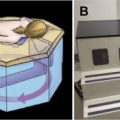Neuroimaging plays a crucial role in diagnosis of brain tumors and in the decision-making process for therapy. Functional imaging techniques can reflect cellular density (diffusion imaging), capillary density (perfusion techniques), and tissue biochemistry (magnetic resonance [MR] spectroscopy). In addition, cortical activation imaging (functional MR imaging) can identify various loci of eloquent cerebral cortical function. Combining these new tools can increase diagnostic specificity and confidence. Familiarity with conventional and advanced imaging findings facilitates accurate diagnosis, differentiation from other processes, and optimal patient treatment. This article is a practical synopsis of pathologic, clinical, and imaging spectra of most common brain tumors.
Key points
- •
A prerequisite for the diagnosis of brain tumors is knowledge of their incidence and prevalence, histopathological classification, and clinical course.
- •
Different tumors occur in different age groups, and the likelihood of malignancy is influenced by the age of the patient. The location of a lesion is critical to narrowing the differential diagnosis.
- •
Neuroimaging plays a crucial role in establishing a diagnosis and is involved in the decision-making process for therapy.
- •
On computed tomography and magnetic resonance imaging (MRI), findings such as calcifications, cystic components, contrast enhancement, and signal intensity on T1-weighted images and T2-weighted images allow characterization of the tumors. However, the introduction of advanced imaging techniques into clinical practice places new tools into the hands of neuroscientists.
- •
Functional imaging techniques can reflect cellular density (diffusion imaging), capillary density (perfusion techniques), and tissue biochemistry (MR spectroscopy). In addition, cortical activation imaging (functional MRI) can identify various loci of eloquent cerebral cortical function. Combining these new tools can increase diagnostic specificity and confidence.
- •
Familiarity with conventional and advanced imaging findings facilitates accurate diagnosis, differentiation from other processes, and optimal patient treatment.
Stay updated, free articles. Join our Telegram channel

Full access? Get Clinical Tree






